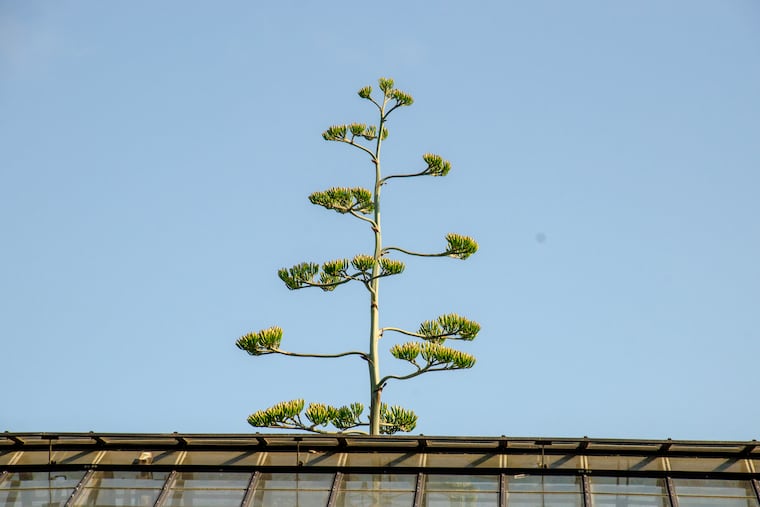A century plant blooms outside of Philadelphia, at Longwood Gardens
In mid-July, Longwood Gardens' 22-year-old century plant will be in full bloom before it dies

A short drive from Philadelphia, a rare plant blooms at Chester County’s Longwood Gardens. Over the last few months, the century plant, also called Agave americana, has sprouted a stalk that now towers above the roof of the greenhouse, to flower once before it dies.
The plant’s name is a misnomer: Although it flowers at the end of its life, century plants rarely live past 30 years old, depending on their growing conditions. Longwood’s plant is 22 years old, the offshoot of an older century plant that bloomed in the garden in 2007. (Another century plant also bloomed at the Kennett Square property in 1997.) These succulents, native to Mexico and Texas, thrive in desert conditions. Related to the blue agave from which tequila is made, A. americana can be used to create mezcal (tequila’s smokier cousin) and a natural sweetener.
In February, the plant began growing an asparagus-like massive stalk that grew at the rate of 5 to 6 inches a day. Now 36 feet tall, the succulent extends through the glass roof of Longwood’s Silver Garden, sprouting branches with bunches of green buds. Garden staff removed a panel of glass from the roof to give the plant more space to grow. The lower branches are beginning to blossom into yellow flowers and Longwood expects full bloom in mid-July.
Gardeners will remove the plant in October and they plan to dry the flower head (called an inflorescence) and use it in the Christmas display next year. Another century plant, currently growing in the production greenhouse, will replace it, starting off the clock once more. That baby plant will be roughly four feet tall and three feet wide, ready to embark on its own decades-long journey. It won’t flower until 2044 or so.